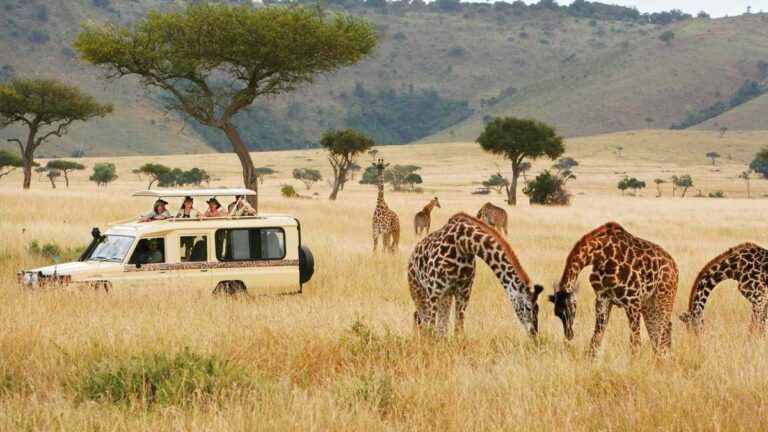The Great Wildebeest Migration in Masai Mara | The Great Wildebeest Migration in Serengeti
The Great Wildebeest Migration in Masai Mara | The Great Wildebeest Migration in Serengeti
The Great Migration, often hailed as one of nature’s most spectacular events, is a breathtaking phenomenon that unfolds annually across the vast plains of the Serengeti in Tanzania and the Maasai Mara in Kenya. This extraordinary journey involves over a million wildebeest, accompanied by zebras and other grazers, as they traverse the landscape in search of fresh grazing grounds and water sources.
The Route of the Migration
The migration typically begins in the Serengeti around late June or early July, when the wildebeest herd starts its journey northward towards the Maasai Mara. The wildebeest are driven by instinct, following the rains and the availability of grass. The herd moves in a circular route, covering approximately 1,800 miles over the course of a year.
Key Stages of the Migration
- Calving Season: Around February, wildebeest gather in the southern Serengeti for calving. This is a crucial time, as approximately 500,000 calves are born within a span of just a few weeks. The calving season is critical for the survival of the species, as the sheer number of births ensures that many will survive to adulthood, despite the predation from lions, hyenas, and crocodiles.
- Northward Journey: As the dry season approaches, the herds begin their trek north. This migration is not just about survival; it’s a display of nature’s resilience and adaptability. The wildebeest navigate through challenging terrains, including river crossings, where they face dangers from predators lurking in the waters.
- Crossing the Mara River: One of the most dramatic moments of the migration occurs when the wildebeest attempt to cross the Mara River. This treacherous crossing is marked by intense moments of struggle as they face strong currents and the ever-present threat of crocodiles. This spectacle draws thousands of tourists and wildlife enthusiasts each year.
- Return to the Serengeti: As the rainy season begins in October, the wildebeest gradually make their way back to the Serengeti, completing the cycle. Along the way, they continue to graze and give birth, ensuring the survival of their species.
The Impact of the Migration
The Great Migration is not only a vital natural event for the wildebeest but also for the ecosystems of the Serengeti and Maasai Mara. The movement of these animals helps maintain the balance of the grasslands, ensuring that no single area is overgrazed. Additionally, the migration supports a thriving tourism industry, providing livelihoods for local communities and fostering conservation efforts.
Conclusion
Witnessing the Great Wildebeest Migration is an unforgettable experience that showcases the beauty and harsh realities of nature. It is a reminder of the interconnectedness of all living beings and the importance of protecting these natural wonders for future generations.
Contact us on
Phone number: 0711943610
Email us: bookings@nomadicessentialstravel.com, info@nomadicessentialstravel.com
Contact form: Please click here to fill in the contact form
In need of camping gears? Please visit our online shop





